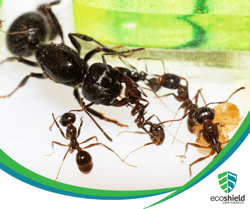 In the intricate world of ants, queen ants hold a position of paramount importance, steering the destiny of entire colonies. As the unsung matriarchs, these regal insects play a pivotal role in the survival and proliferation of their communities. EcoShield will delve into the fascinating purpose that queen ants serve within their colonies, exploring their unique biology, reproductive prowess, and the profound impact they have on shaping the social dynamics of ant societies. Join us on this enthralling journey as we unveil the hidden intricacies behind the life and purpose of queen ants.
In the intricate world of ants, queen ants hold a position of paramount importance, steering the destiny of entire colonies. As the unsung matriarchs, these regal insects play a pivotal role in the survival and proliferation of their communities. EcoShield will delve into the fascinating purpose that queen ants serve within their colonies, exploring their unique biology, reproductive prowess, and the profound impact they have on shaping the social dynamics of ant societies. Join us on this enthralling journey as we unveil the hidden intricacies behind the life and purpose of queen ants.
What is a “Queen Ant”?
A queen ant is the reproductive powerhouse and central figure in an ant colony. Unlike worker ants, whose roles primarily involve foraging, nest maintenance, and caring for the young, the queen's primary function is to ensure the colony's survival through reproduction. Remarkably, a queen ant can live for several years, during which she can produce a vast number of eggs. These eggs hatch into worker ants, expanding the colony's population.
The queen is typically larger than other ants in the colony and has distinct physiological adaptations to fulfill her reproductive duties. Her significance lies not only in the sheer volume of offspring she can produce but also in her ability to release chemical signals that maintain order and hierarchy within the colony. In essence, the queen ant stands as the epicenter of an ant society, orchestrating the colony's growth and stability through her unique biological role.
How is a queen ant different from other female ants?
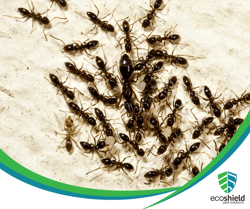 Within an ant colony, the queen holds a distinctive role that sets her apart from other female ants, known as workers. The most prominent and defining feature of a queen ant is her reproductive capacity. Unlike worker ants, whose primary responsibilities revolve around foraging, nursing, and maintaining the nest, the queen's primary function is to lay eggs and ensure the colony's continuity.
Within an ant colony, the queen holds a distinctive role that sets her apart from other female ants, known as workers. The most prominent and defining feature of a queen ant is her reproductive capacity. Unlike worker ants, whose primary responsibilities revolve around foraging, nursing, and maintaining the nest, the queen's primary function is to lay eggs and ensure the colony's continuity.
Physiologically, the queen ant exhibits notable differences compared to her worker counterparts. Queens are often larger in size, boasting a robust and well-developed reproductive system. This size difference is not merely a consequence of age; rather, it is an adaptation to accommodate the queen's egg-laying capabilities. The queen's abdomen is specially equipped to house many eggs, and she possesses specialized glands to produce the pheromones essential for maintaining order and cohesion within the colony.
The life span of a queen ant is considerably longer than that of worker ants. While workers may live for a few weeks or months, depending on the species, queens can survive for several years. This extended lifespan allows the queen to continue laying eggs and contributing to the colony's growth throughout her life.
Behaviorally, queen ants also differ significantly from workers. Queens typically remain within the confines of the nest, focusing on their reproductive duties, while workers venture outside to forage for food, defend the colony, and care for the developing brood. The queen's behavior is intrinsically tied to the survival and expansion of the colony, emphasizing her unique and crucial role within the intricate social structure of an ant community.
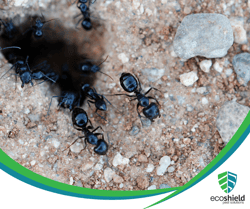 The queen ant stands out from other female ants due to her specialized reproductive function, larger size, extended lifespan, and distinct behaviors centered around ensuring the colony's perpetuation. This differentiation underscores the collaborative and hierarchical nature of ant societies, where each member plays a specific role in contributing to the overall success and sustainability of the colony.
The queen ant stands out from other female ants due to her specialized reproductive function, larger size, extended lifespan, and distinct behaviors centered around ensuring the colony's perpetuation. This differentiation underscores the collaborative and hierarchical nature of ant societies, where each member plays a specific role in contributing to the overall success and sustainability of the colony.
What role does the queen ant play in an ant colony?
The queen ant is the central and indispensable figure in an ant colony, playing a vital role in the colony's survival, growth, and organization. Her primary function revolves around reproduction, as she is the sole egg-laying individual within the colony. The queen's ability to lay eggs is crucial for the expansion of the ant population and the perpetuation of the colony. This reproductive responsibility is so central to her role that the overall health and success of the colony depend on the queen's reproductive prowess.
Throughout her lifespan, which can span several years, the queen continues to lay eggs, ensuring a constant supply of new workers to perform various tasks essential for the colony's functioning. As the colony expands, the queen's role becomes increasingly crucial in sustaining the population and maintaining a balance among worker ants, soldiers, and other castes within the colony.
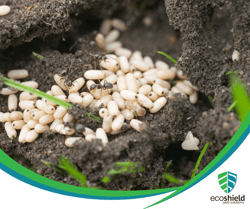 Additionally, the queen typically remains within the safety of the nest, surrounded by worker ants attending to her needs. Her focus is primarily on egg-laying, as worker ants take on the responsibilities of foraging, defending the colony, and caring for the developing brood. The queen's presence and reproductive activities serve as a unifying force for the colony, providing a sense of purpose and cohesion among its members.
Additionally, the queen typically remains within the safety of the nest, surrounded by worker ants attending to her needs. Her focus is primarily on egg-laying, as worker ants take on the responsibilities of foraging, defending the colony, and caring for the developing brood. The queen's presence and reproductive activities serve as a unifying force for the colony, providing a sense of purpose and cohesion among its members.
In summary, the queen ant is the linchpin of an ant colony, fulfilling a specialized role in reproduction that ensures the colony's survival and growth. Her unique physiological attributes, extended lifespan, and pivotal position in the social structure underscore the importance of the queen in maintaining the delicate balance within the intricate world of ant colonies.
What happens if the queen ant dies?
The death of a queen ant can have significant consequences for the entire ant colony, as she plays a pivotal role in its reproduction and overall functioning. The most immediate impact is on the colony's reproductive capacity. Without a queen, the production of new eggs ceases, and the colony loses its ability to expand through natural reproduction. The absence of new workers and reproductives can lead to a decline in the colony's population over time, affecting its resilience and ability to compete with other colonies.
In many ant species, worker ants are sterile females, and the queen is the sole individual capable of laying fertilized eggs. These eggs develop into workers, soldiers, and future queens, contributing to the colony's diversity and success. Without a queen, the colony loses its ability to replenish its workforce and reproductive members, impacting its long-term survival.
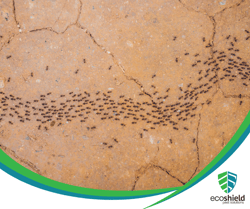 The death of a queen can also disrupt the social dynamics within the colony. Queens release pheromones that help maintain order and hierarchy among the workers. The absence of these pheromones can lead to confusion and conflict among the remaining ants, potentially resulting in disorganization and a breakdown of the established structure.
The death of a queen can also disrupt the social dynamics within the colony. Queens release pheromones that help maintain order and hierarchy among the workers. The absence of these pheromones can lead to confusion and conflict among the remaining ants, potentially resulting in disorganization and a breakdown of the established structure.
In some cases, worker ants may attempt to raise a new queen by selecting and nurturing a female larva to take on the role. However, the success of this process depends on various factors, including the availability of suitable larvae and the colony's overall health. If the replacement process fails or is delayed, the colony may face a decline in population and productivity.
Ultimately, the death of a queen ant can have cascading effects on the entire colony, impacting its reproductive capabilities, social structure, and long-term viability. The survival and success of an ant colony are intricately tied to the presence and functionality of a queen, making her a critical linchpin in the complex dynamics of ant societies.
How is a queen ant chosen?
The process of selecting a queen ant is a fascinating aspect of ant colony dynamics, shaped by intricate biological and environmental factors. Generally, the designation of a queen begins when a colony reaches a certain size and maturity. In some species, worker ants can identify the need for a new queen, often prompted by factors such as the death or decline in fertility of the existing queen.
The selection of a new queen can occur through several mechanisms. In some cases, worker ants may begin to nurture certain larvae differently, providing them with a special diet that encourages their development into potential queens. These selected larvae, often known as "royal larvae," receive an elevated level of care and nutrition, contributing to the development of the physical and physiological characteristics necessary for assuming the role of a queen.
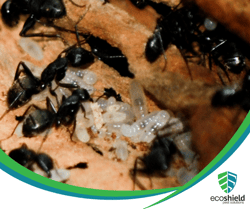 Another method involves swarming behavior, where a portion of the colony, including potential queen candidates, leaves the nest in a reproductive swarm. During this process, virgin queens engage in mid-air mating with males from other colonies. After mating, the newly fertilized queens seek suitable locations to establish their own colonies. The success of a queen in founding a new colony is influenced by factors such as environmental conditions, resource availability, and her ability to evade predators.
Another method involves swarming behavior, where a portion of the colony, including potential queen candidates, leaves the nest in a reproductive swarm. During this process, virgin queens engage in mid-air mating with males from other colonies. After mating, the newly fertilized queens seek suitable locations to establish their own colonies. The success of a queen in founding a new colony is influenced by factors such as environmental conditions, resource availability, and her ability to evade predators.
The determination of a queen is also linked to pheromonal communication within the colony. The queen emits specific pheromones that signal her reproductive status and influence the behavior and development of other ants in the colony. In the absence of a queen or if the existing queen's pheromone production declines, worker ants may initiate the process of selecting and nurturing a new queen.
In short, the selection of a queen ant is a multifaceted process influenced by biological, environmental, and social factors. It often involves the careful nurturing of specific larvae, mating behavior, and the communication of chemical signals within the colony. This intricate interplay ensures the continuity and adaptability of ant colonies in response to changing circumstances and the needs of the community.
Why are queen ants important in pest control?
Queen ants play a pivotal role in pest control, particularly in the context of managing ant infestations. While worker ants are responsible for various tasks such as foraging, nest maintenance, and defending the colony, it is the queen who holds the key to the colony's survival and growth. Understanding the significance of queen ants is crucial in developing effective pest control strategies.
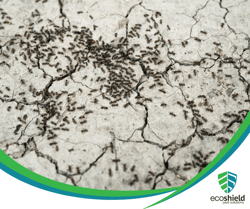 The reproductive capacity of queen ants is central to pest control efforts. By targeting and eliminating the queen, the core of the colony's reproductive machinery, it is possible to disrupt the colony's life cycle. Since the queen is the primary egg-laying individual, her removal can halt the production of new worker ants, ultimately leading to the decline and eventual collapse of the colony. This approach is particularly effective when dealing with persistent ant infestations, as simply eliminating worker ants may not address the root cause of the problem.
The reproductive capacity of queen ants is central to pest control efforts. By targeting and eliminating the queen, the core of the colony's reproductive machinery, it is possible to disrupt the colony's life cycle. Since the queen is the primary egg-laying individual, her removal can halt the production of new worker ants, ultimately leading to the decline and eventual collapse of the colony. This approach is particularly effective when dealing with persistent ant infestations, as simply eliminating worker ants may not address the root cause of the problem.
Additionally, queen ants contribute to the establishment and maintenance of colony cohesion through the release of pheromones. These chemical signals help organize and regulate ant activities within the nest. Pest control methods that disrupt or interfere with the queen's ability to release these pheromones can disrupt the overall organization of the colony, leading to disarray and potential collapse.
In integrated pest management strategies, understanding the biology and behavior of queen ants is essential for developing targeted and sustainable solutions. Rather than solely focusing on eliminating worker ants, addressing the presence and activities of the queen provides a more comprehensive and long-term approach to controlling ant infestations. As such, recognizing the importance of queen ants in the context of pest control is a key aspect of developing effective and environmentally responsible strategies for managing ant populations.
Does EcoShield pest solutions treat ants?
Yes, we do! In fact, the only way to ensure you banish ants for good is to utilize a reputable pest control service like EcoShield Pest Solutions. EcoShield’s botanical solutions are safe and effective in removing any kind of ant that sets up camp in your home. Our 100% guaranteed service will save you the stress of DIY solutions and recurring ant problems associated with them. EcoShield's proactive approach to ant control not only treats the primary pest issue but also focuses on preventing ants and other pests.
Call us today for a free, no-obligation estimate and take back your home! Call us at: (888) 744-1284 or fill out the form on this page.